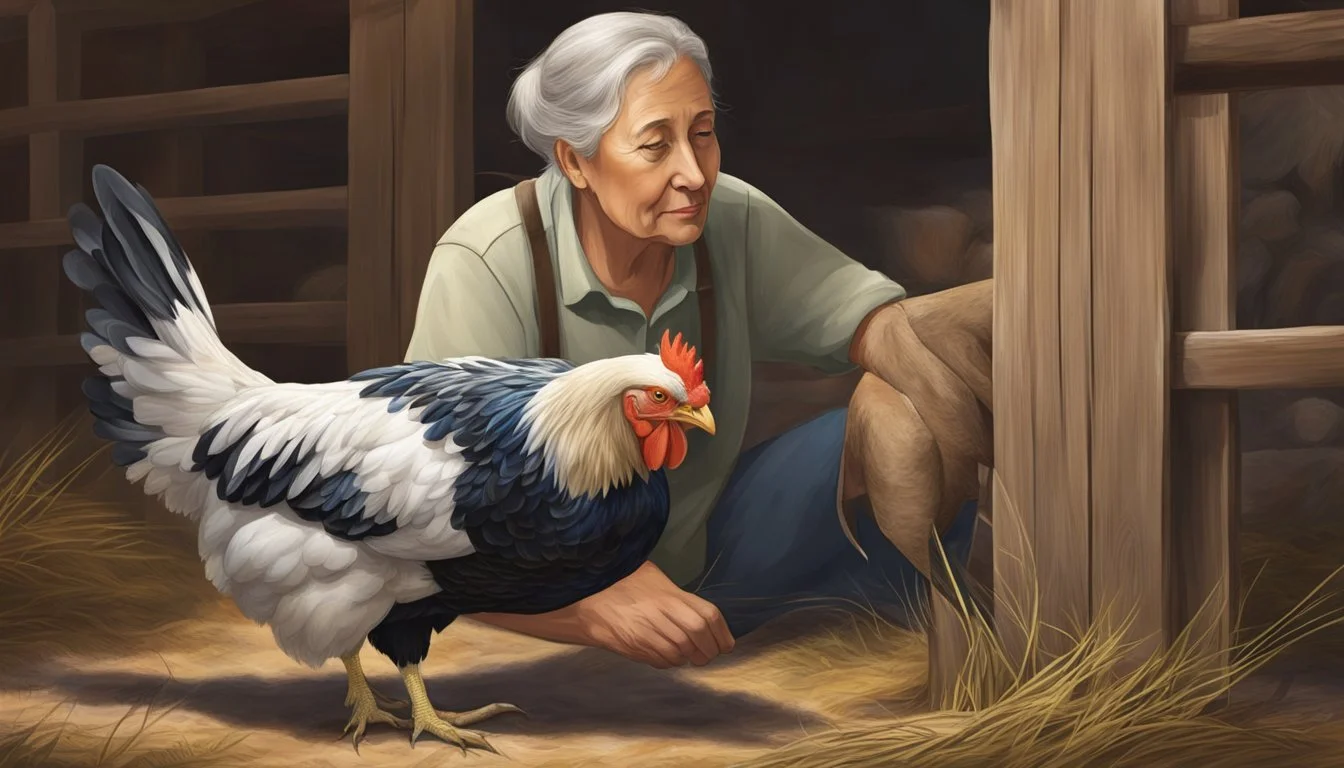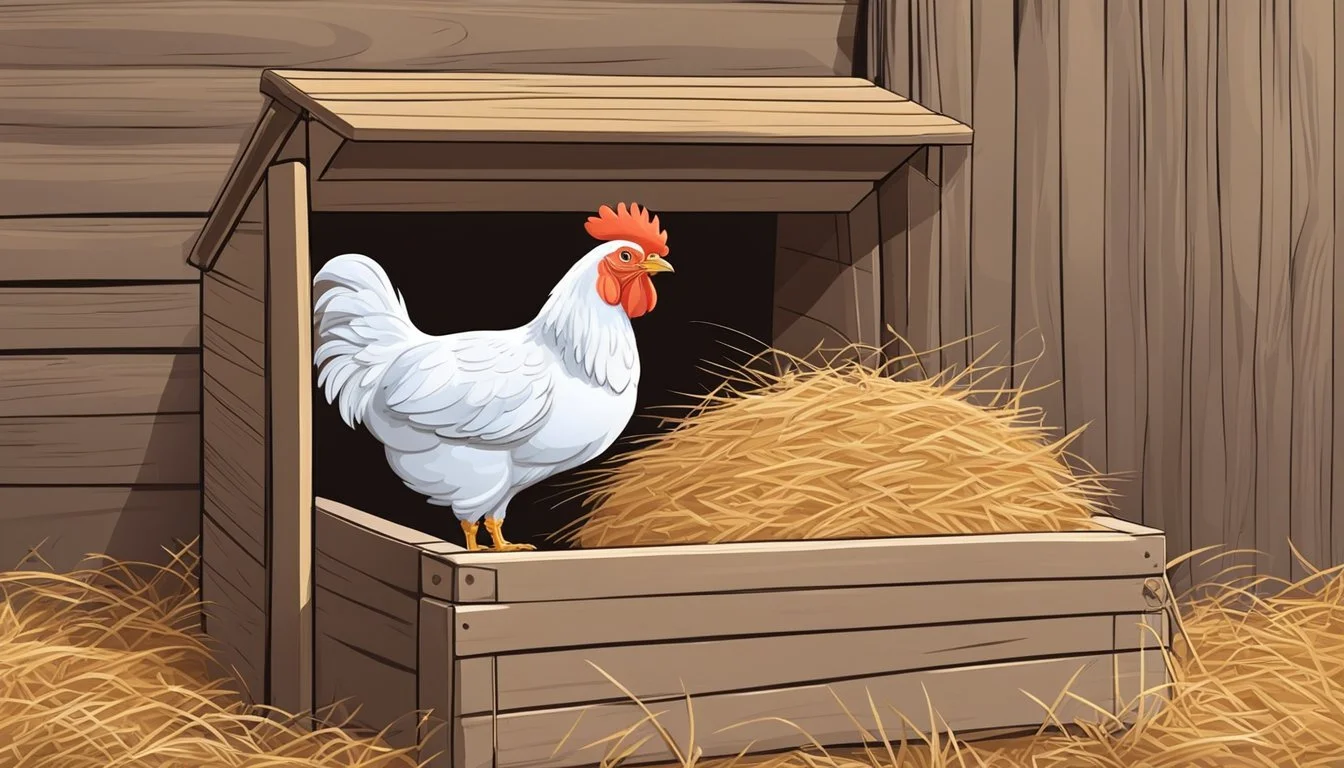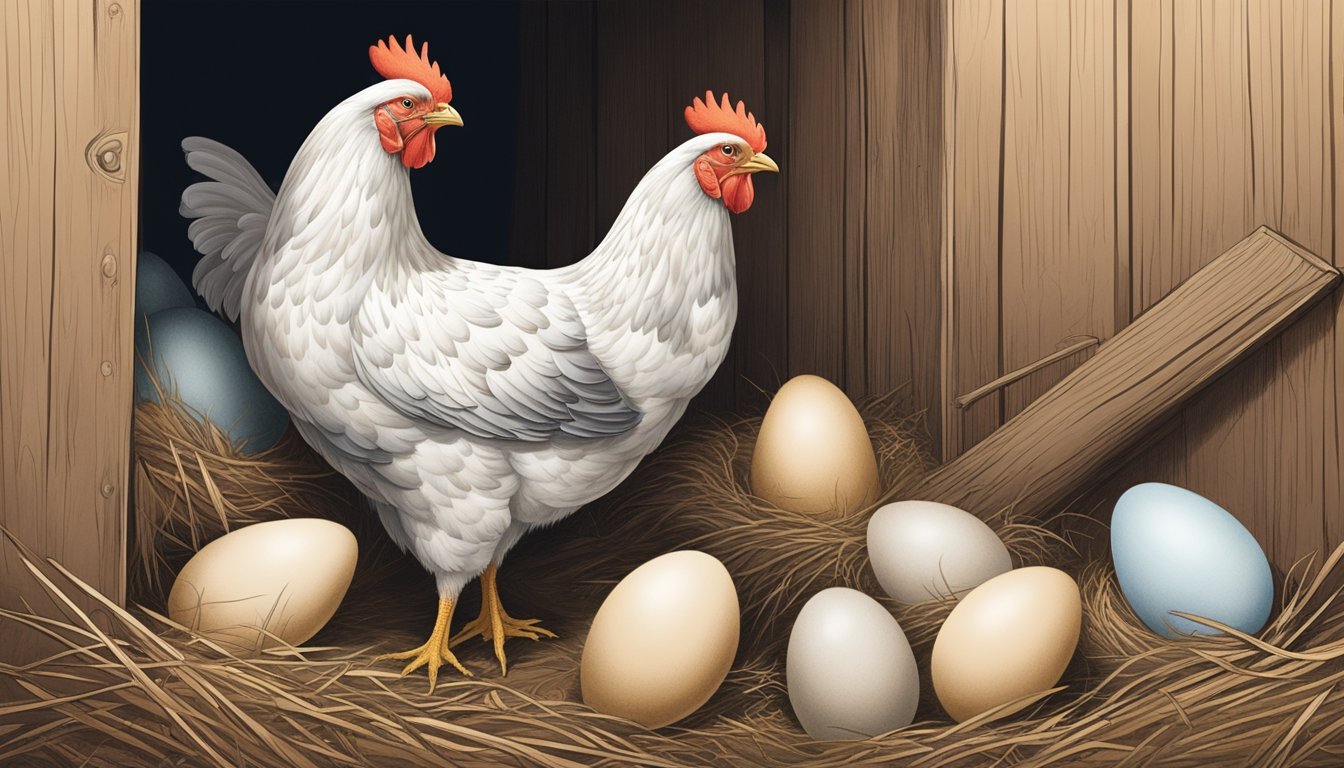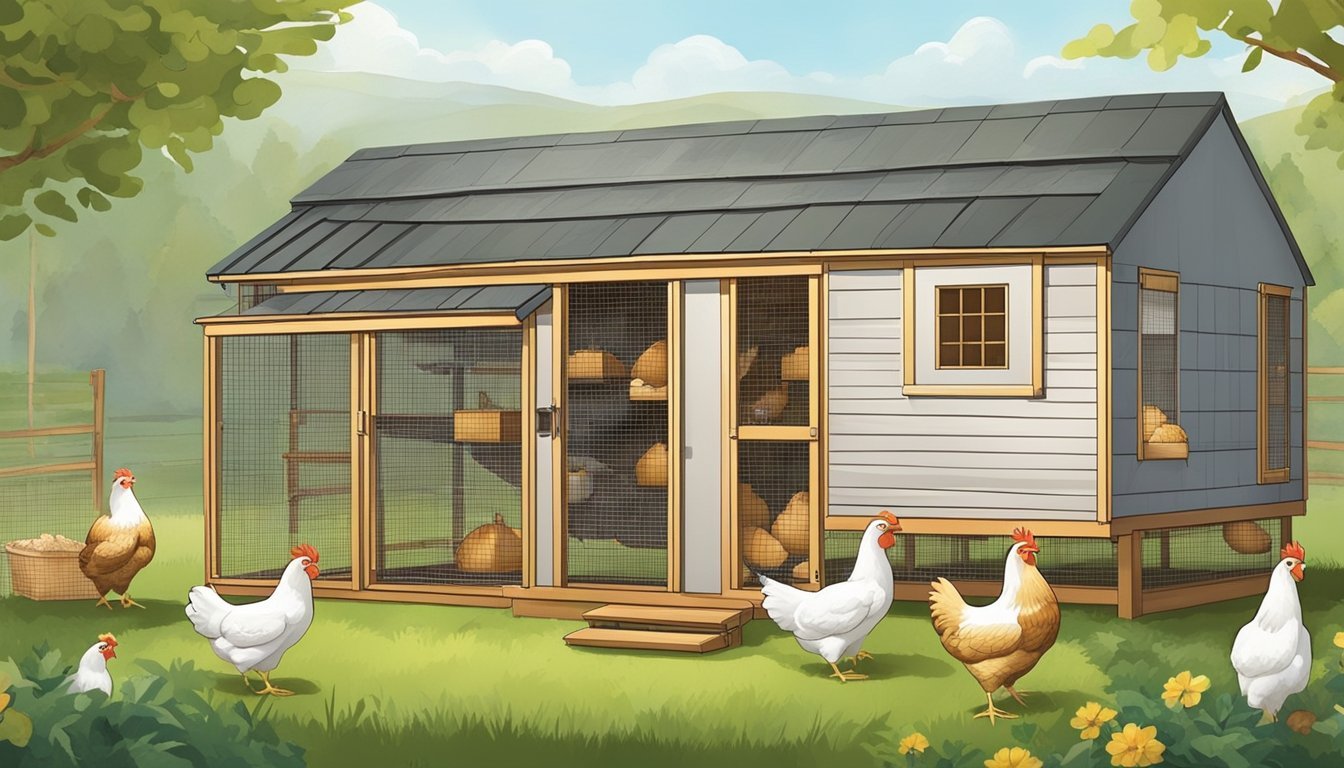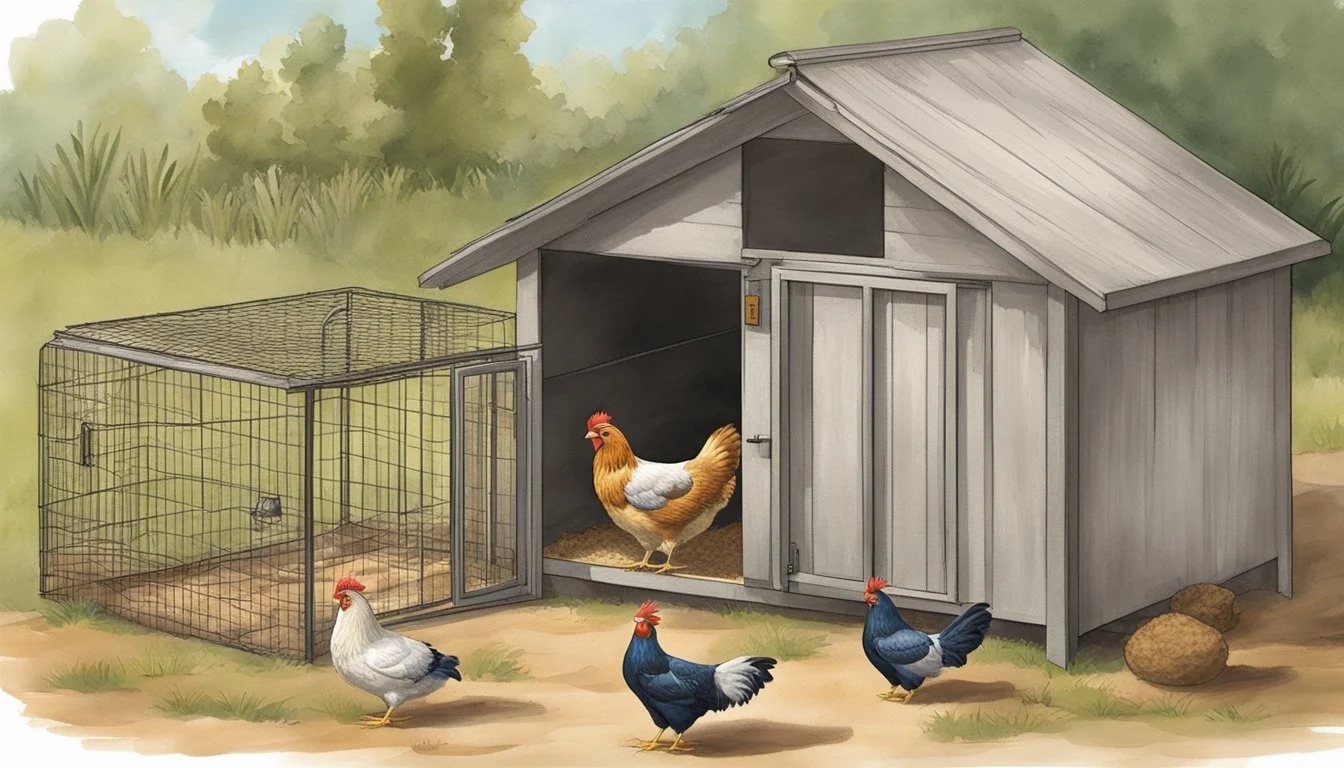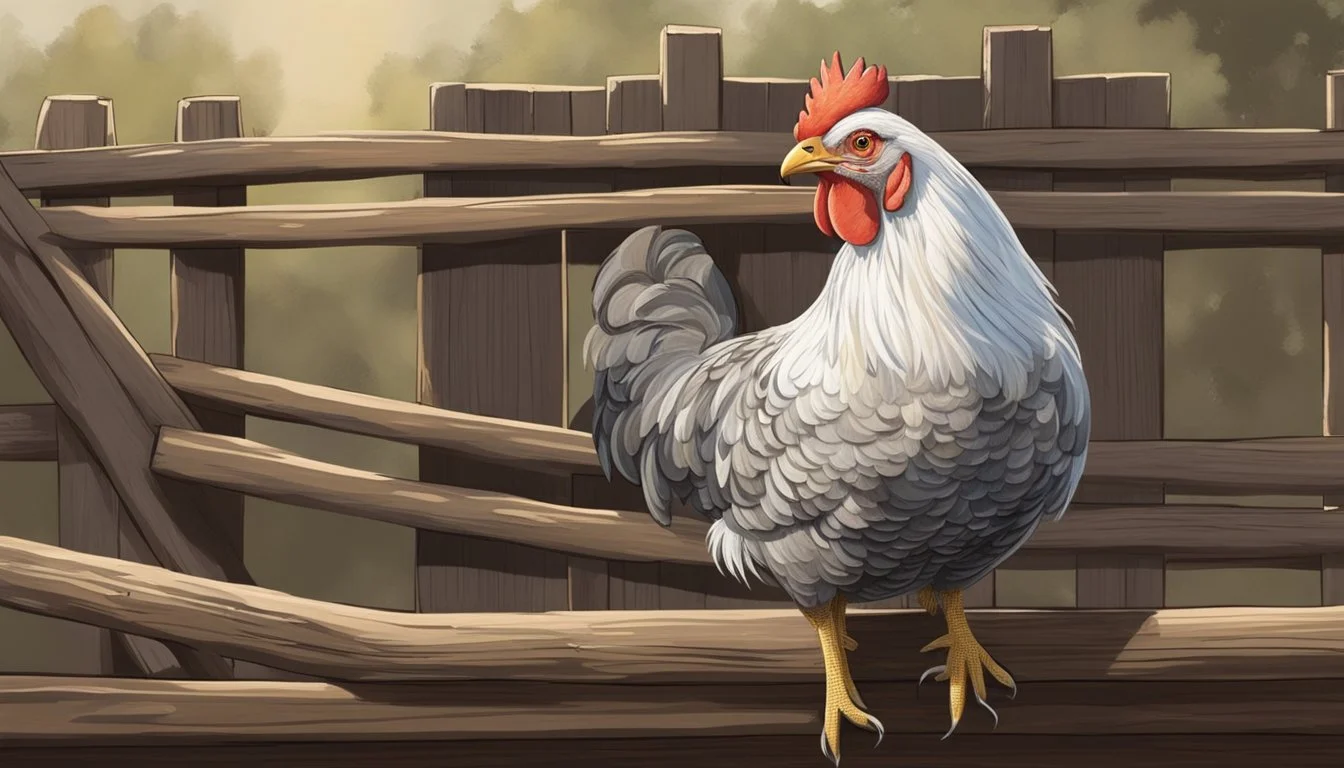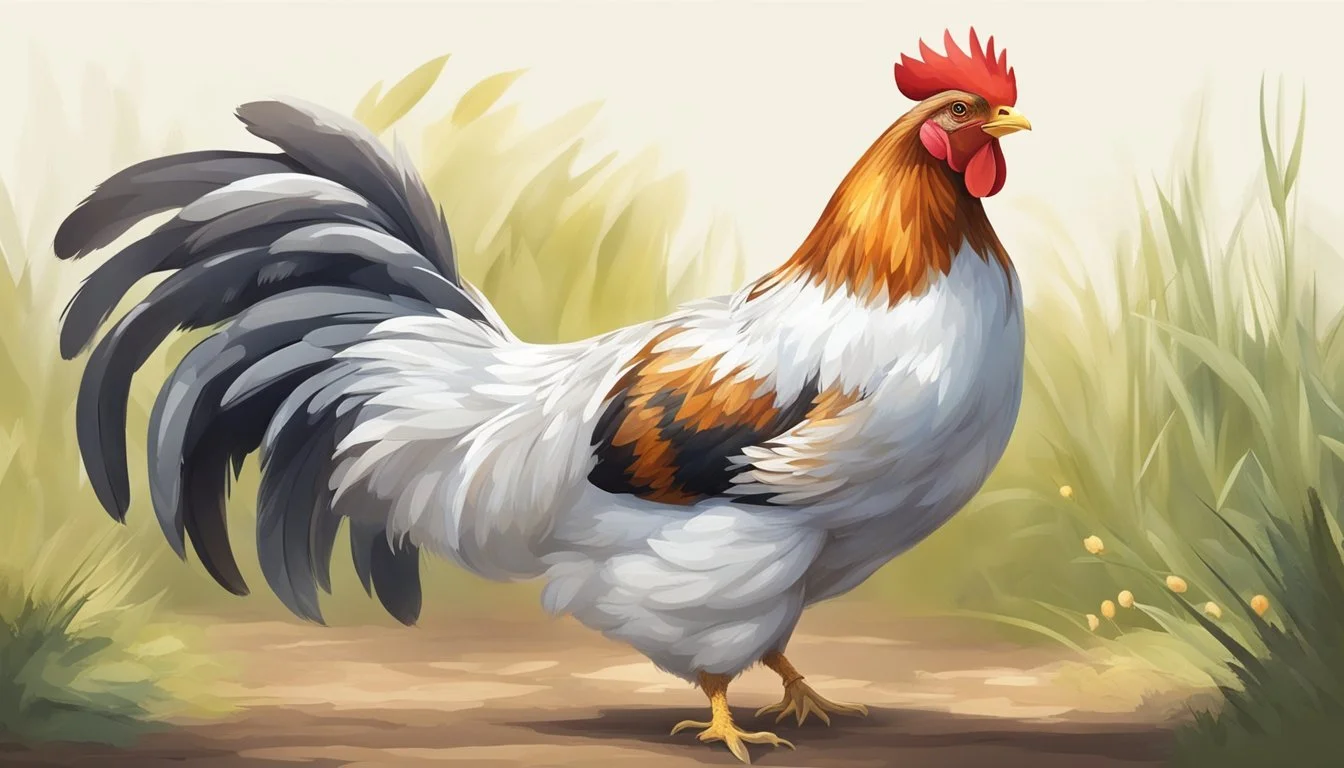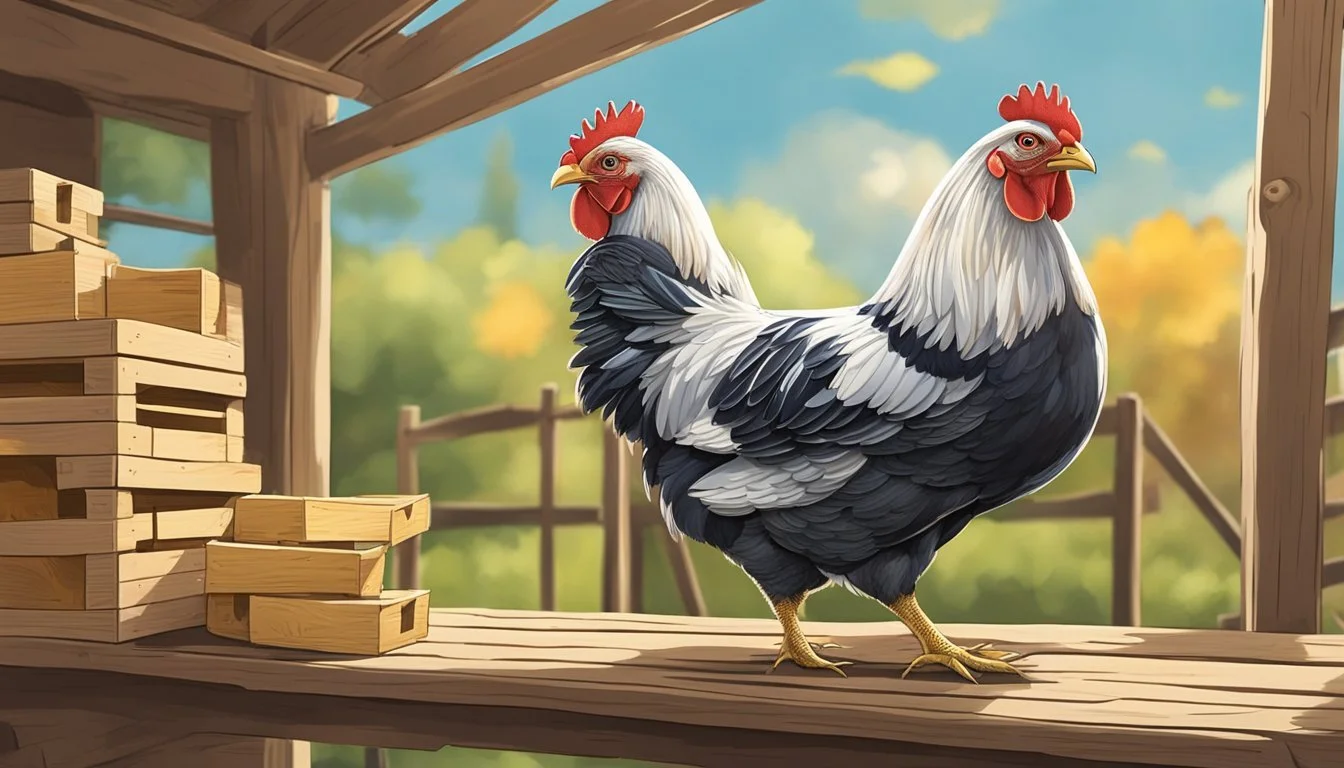How do I manage a laying hen as she ages?
Essential Care Tips for Older Poultry
Managing laying hens effectively as they age is critical for ensuring their well-being and continued productivity. As hens grow older, their needs change, and owners must adapt their care routines accordingly. Proper care includes maintaining a clean and comfortable environment, monitoring health and behavioral changes, and adjusting diet and nutrition to support their aging bodies. Aging hens typically experience a decline in egg production, changes in egg size, and a decrease in shell quality as they pass their peak laying years, making it essential for keepers to be observant and responsive to these transitions.
A hen's life span can vary, with some backyard hens living 6-8 years and most commercially raised layers living for 2-3 years. A well-managed hen can continue to lay eggs for several years, although the frequency and quality of the eggs might decrease over time. Strategic management practices, including periodic flock replacement and provision of supplements like crushed oyster shells, can help maintain a small flock's productivity. Adaptations to the coop environment, such as providing cushioned perches and keeping food and water easily accessible, contribute to the comfort and health of older hens, ensuring their quality of life as they age.
Understanding the Life Stages of a Laying Hen
Managing a laying hen effectively requires knowledge of her life stages, each with distinct care needs. From the start as a delicate chick to the more complex requirements in old age, every stage impacts overall health and egg production capacity.
From Chick to Pullet
In the initial weeks of a chick's life, there's a focus on rapid organ and immune system development. Growth during this phase is critical and includes substantial advancements in the digestive tract. By the end of this stage, at around 6 weeks, the pullet's skeleton and muscles have developed significantly, preparing her for the next phase of life.
Reaching Sexual Maturity
A pullet typically reaches sexual maturity between 16 and 24 weeks of age. This is when they lay their first egg. It's crucial during this period to provide a diet rich in calcium and other nutrients to support eggshell formation. Monitoring bird health is essential to ensure they smoothly transition to regular egg-laying.
Peak Egg Production
Hens hit their peak egg production around 26 to 30 weeks of age. It's possible for a hen to lay an egg nearly daily during this phase, reaching impressive production rates. They require a diet tailored to sustain high energy needs, good layer management, and an environment that promotes welfare to maintain this performance.
Declining Productivity in Old Age
As hens age beyond 2-3 years, their productivity naturally declines. Egg count, size, and shell quality may decrease, signaling that the hen is entering old age. While some backyard flocks can keep producing until they are 6-8 years old, most commercial layers are kept for a shorter period. Despite a decrease in egg production, older hens still need proper care and nutrition to maintain their health and well-being.
Optimal Nutrition for Aging Hens
As laying hens age, their nutritional needs evolve, necessitating a careful reconsideration of their diet to maintain health and egg production. Balancing the diet with the right amounts of protein, calcium, vitamins, and energy becomes essential for their well-being.
Nutritional Needs Overview
Older laying hens require a balanced diet that provides sufficient energy, but is not excessive, as they are less active and have a slower metabolism. The diet must also include adequate protein to support muscle maintenance and feather health. An optimal combination of vitamins and minerals is crucial to support immune function and overall health. It is recommended to provide these nutrients through a well-formulated layer feed or with appropriate supplements.
Importance of Calcium
Calcium is paramount for an aging hen's diet as it plays a critical role in shell quality. As hens grow older, their ability to absorb calcium diminishes, which requires an increase in dietary calcium. This can prevent weak shells and maintain egg integrity. A common recommendation is to offer calcium in the form of oyster shells or limestone as a free-choice supplement alongside their regular feed.
Adjusting Diet for Older Hens
As hens age, they experience reduced egg production, making energy conservation vital. Feeding a lower-energy layer feed or reducing rations to prevent obesity is crucial. Adjustments may also include increasing dietary fiber to aid digestion and modifying the feed form to make it easier for older hens to consume. Monitoring these adjustments carefully ensures that the hens are not underfed or overfed. Offering a diet that addresses the changing needs of older hens is important to facilitate continued health and productivity.
Housing and Environment
Managing the housing and environment of laying hens is crucial as they age. It ensures their wellbeing and continued egg productivity. Appropriate accommodations can greatly influence their health and comfort.
Nest Box Comfort and Accessibility
Nest boxes must be designed for ease of access and comfort, accommodating the hen's natural nesting behaviors. As hens age, lower nest boxes become necessary, as older hens may struggle with high perches. The Purdue University College of Veterinary suggests soft, clean bedding should be maintained in each box to support egg laying and prevent injuries.
Maintaining a Clean and Safe Coop
A clean and sanitary coop is fundamental for preventing diseases and pests such as red mite, which can greatly impact hen welfare. The coop should have good ventilation and regular cleaning, as outlined in the Merck Veterinary Manual, to provide a safe and hygienic environment for the aging layers.
Space Requirements and Pecking Order
Space allocation should be sufficient to allow each hen to exhibit normal behaviors and establish a stable pecking order. Overcrowding can cause stress and aggression. The American Veterinary Medical Association emphasizes that laying hen housing systems must provide adequate space for good health and welfare, which is particularly critical as hens age and their mobility may decrease.
Health and Disease Management
Ensuring the health and longevity of laying hens involves vigilant disease prevention and effective management strategies. Key to this is controlling parasites, monitoring health, and managing molting periods responsibly.
Parasite Control
Controlling parasites such as mites and lice is vital for maintaining not just the health of individual chickens but the overall health of the flock. Regular inspection is required for early detection of these pests.
Mites: These parasites can cause skin irritation, feather loss, and lead to anemia in severe infestations. Treatment often involves the application of approved acaricides.
Lice: Similar to mites, lice infestations result in discomfort and reduced productivity. The treatment protocol may include dusting with insecticidal powder.
Monitoring for Common Illnesses
As hens age, they become more susceptible to a range of illnesses. It's paramount to closely monitor for signs such as changes in behavior, appearance, and egg production that may indicate health issues.
Respiratory infections: Symptoms such as coughing and sneezing should be addressed with veterinarian consultation.
Reproductive problems: Any abnormality in egg laying warrants a closer examination for potential reproductive diseases.
Implementing straightforward biosecurity measures can preempt the spread of diseases. Regular veterinary check-ups and vaccinations are also part of a comprehensive health management plan for laying hens.
Managing Molting
Molting is a natural process where hens renew their feathers. It can be stressful for the birds, often resulting in a temporary cessation of egg production.
Balanced Diet: Providing a high-protein diet during molting supports feather regrowth and helps hens recover more quickly.
Stress Reduction: Ensuring that hens have a calm environment with adequate space can mitigate the negative impacts of molting.
By being attentive to the specific health and disease management needs of laying hens as they age, poultry keepers can sustain their flock's productivity and welfare.
Reproductive Changes and Broodiness
As hens age, they undergo reproductive changes that affect their egg-laying patterns and may exhibit broodiness, a natural instinct to hatch eggs. Understanding these changes helps chicken keepers manage their flock effectively.
Understanding Broodiness
Broodiness is a behavioral condition where a hen demonstrates an overwhelming desire to hatch eggs, characterized by an aversion to leaving the nest. These hens often exhibit certain behaviors such as fluffing their feathers, clucking in a specific manner, and being aggressive to anyone who tries to disturb them or their nest. The genetic predisposition for broodiness varies among different chicken breeds, with some being more prone to this state than others. For example, Silkies and Cochin breeds are known for their strong broody tendencies.
Managing Broody Hens
To manage a broody hen, interrupting her broody cycle is key. This involves physically removing her from the nest and ensuring she does not have access to eggs, which can be actual or in the form of objects that resemble eggs, such as golf balls. Repeatedly doing so can discourage her from broody behavior. Providing a separate and less comfortable nesting area can also diminish the urge to brood. Furthermore, ensuring the hen maintains a balanced diet and spends time away from the nest promotes regular behavior and discourages broodiness. For those interested in how a broody hen impacts the flock and egg production, Backyard Homestead HQ provides comprehensive insights.
Egg Laying Cycles and Interruptions
A hen's egg laying pattern usually diminishes naturally with age. During their peak, hens may lay an egg nearly every day, but as they age, the frequency of laying eggs reduces, and they may experience longer gaps between layings. Interruptions in laying can also result from broodiness, as a broody hen stops laying and focuses on hatching. During the broody period, the chicken's body diverts its energy from egg production to the incubation process. Once the broodiness is resolved, or the hatching is complete, it can take some time before she resumes her normal egg-laying cycle. Understanding these patterns is crucial for the chicken keeper to ensure healthy hens and steady egg production as described in detail by Once Upon A Chicken.
Flock Dynamics and Behavior
Managing a laying hen as she ages involves understanding the complex interactions within the flock, particularly the pecking order and the challenges of integrating new birds. These dynamics can significantly impact the well-being and productivity of older hens.
Integrating New Birds
Introducing new birds to a backyard flock requires a careful approach to minimize stress and aggression. Young hens and chicks, when added, should be gradually introduced to the older birds to prevent disruption. It's important to monitor interactions closely, as established birds might show dominance aggressively. Quarantine new birds initially to ensure they don't introduce diseases to the flock. After the quarantine period, integrate them during a low-stress time, such as during free-range periods or while older birds are occupied with food, providing ample space for both new and existing flock members.
Quarantine: Isolate new birds for a set period.
Observation: Watch for signs of aggression or stress.
Space: Ensure enough room for all birds to reduce territorial behavior.
Coping with a Declining Pecking Order
As hens age, their place in the pecking order may decline, particularly if a rooster is present to enforce the hierarchy. An older hen may become more susceptible to bullying and could have reduced access to food and resources. To manage these issues:
Monitor the older hens for signs of bullying, such as feather loss or injuries.
Provide multiple feeding and watering stations to ensure all birds have access.
Create separate areas where older hens can feed and rest without competition.
By being attentive to the social structure and behavior within a small flock, owners can help maintain harmony and mitigate the challenges faced by aging laying hens.
Enhancing Egg Quality and Production
In managing aging laying hens, two pivotal interventions can substantially influence egg quality and production: optimizing lighting conditions and offering a balanced diet inclusive of various treats. These approaches cater to the birds' physiological needs and encourage sustained productivity throughout their life.
Supplemental Lighting During Shorter Days
Supplemental light in a poultry house prolongs the perceived day length for hens, mitigating the natural drop in egg production during shorter days. Ideally, laying hens require about 14 to 16 hours of light daily to maintain optimal production levels. By integrating artificial lighting, one can mimic these conditions even during winter months. The provided light should closely resemble natural sunlight in spectrum and intensity, without causing stress to the hens.
Providing Varied and Nutritious Treats
Offering treats to laying hens can enhance egg quality, as it allows for a more varied intake of nutrients. It's crucial to ensure that treats do not exceed 10% of the hen's daily diet so as not to disrupt their nutritional balance. Treats rich in calcium and protein, like small mealworms or leafy greens, support shell integrity and egg production. Additionally, the inclusion of yellow and orange vegetables can influence egg yolk color, contributing to a range of visually appealing egg colors. This variety not only bolsters the hen's health but can also make her eggs a more desirable product.
Safety and Predation
As laying hens age, their ability to evade predators may diminish, making them more susceptible to attacks. Ensuring strong security measures and regular health check-ups are vital to protect these vulnerable members of your flock from predation.
Securing Against Predators
Security Measures: To safeguard your hens, it's essential to use robust materials such as 1/2 inch hardware cloth to cover coop openings. This welded wire is far more effective than chicken wire, as it's tougher and not easily torn apart by predators.
Coop Design: Ensure that all potential entry points, including vents and windows, are secured with hardware cloth, not just at ground level but also at higher access points.
Nighttime Protocol: Establish a routine to lock chickens in a predator-proof coop from dusk until dawn when most predators are active.
Regular Health Check-Ups to Prevent Predation
Overall Health Monitoring: Predators often target sick or weak hens. Regularly monitoring your flock's health can prevent them from becoming easy prey.
Physical Inspections: Regular physical examinations are crucial to detect early signs of illness or injury.
Nutrition: Provide age-appropriate nutrition to maintain their strength and immune system, which can deter predators by keeping the hens robust and less likely to be seen as easy targets.
End-of-Life Considerations
Managing laying hens effectively includes recognizing when they've reached the end of their productive cycle. Decisions about culling and ensuring a hen's quality of life as she ages are crucial for both ethical poultry management and farm productivity.
Deciding When to Cull
When hens’ productivity decreases due to old age, it's essential to consider whether to cull them from the flock. The optimal timing of culling can depend on a hen's overall health and remaining productivity. A hen might experience a substantial decline in egg production, from a peak of possibly over 90% lay rate down to below 50%, typically around 60-70 weeks of age. At this point, one must evaluate if keeping the hen is economically viable or if humane culling is the responsible choice.
Quality of Life for Non-Laying Hens
For those who choose not to cull, maintaining the quality of life for aging hens that are no longer laying regularly is crucial. These hens require appropriate care, which includes a suitable diet, space, and health monitoring. A non-laying hen can live for several years post-production, and her well-being should be a priority. Regular health check-ups are vital to ensure any potential issues associated with old age are addressed promptly.
Specific Concerns for Small Scale and Backyard Operations
Managing a laying hen as she ages in small scale and backyard operations requires consideration of breed selection and sustainable practices tailored to the needs of a homesteader or backyard flock owner.
Choosing the Best Chicken Breeds for Home Flocks
When homesteaders and owners of small flocks select chicken breeds for laying, they typically look for breeds that not only produce a consistent supply of eggs but are also well-suited to the available space and climate. Dual-purpose breeds are popular among small-scale operations; they provide both meat and eggs, maximizing the utility of the flock. For instance, breeds like the Sussex, Plymouth Rock, and Rhode Island Red are known for their resilience and high egg production as well as being good table birds.
Raising Chickens Sustainably at Home
The sustainability of raising laying hens includes implementing practices that are environmentally sound and economically viable for small scale and backyard flocks. This involves considerations such as:
Feeding: Utilizing local feed sources or growing feed can reduce costs and carbon footprint.
Healthcare: Regular health checks and natural preventative measures help maintain a healthy flock.
Housing and Space: Adequate shelter and space for foraging contribute to the overall well-being of the hens.
Rooster: Keeping a rooster can facilitate natural flock management and ensure a self-sustaining flock through fertilized eggs.
By addressing these key areas, one can manage aging laying hens effectively, ensuring they continue to thrive in a small-scale or backyard setting.
Practical Tips for the Homesteader
As hens age, their care and nutritional needs change. Homesteaders can manage these needs efficiently through DIY feed and nutrition management as well as homemade solutions for coop maintenance.
DIY Feed and Nutrition Management
Starter Feed vs. Layer Feed: Initially, chicks require a starter feed with a higher protein content, usually around 22-24%. As pullets develop, they transition to a layer feed with approximately 16% protein. This ensures they receive the necessary nutrients for egg production during their prime in spring and summer.
Calcium Boost: It's crucial to supply older laying hens with a good source of calcium; consider keeping a dish of crushed oyster shells in the coop. Alternatively, properly sanitized and crushed eggshells can be fed back to the chickens for a natural calcium supplement.
Protein During Molt: During molting periods, typically in fall, chickens need a higher protein intake. Adding corn to their diet helps, but homesteaders should adjust the feed, ensuring it is rich in protein to support new feather growth.
Homemade Solutions for Coop Maintenance
Maintain a Clean Coop: The coop should be cleaned regularly to prevent disease and parasites. A deep-litter method can be utilized, which involves layering bedding materials like pine shavings or straw over the coop floor before adding more material on top as it becomes soiled.
Effective Dust Baths: Chickens naturally take dust baths to maintain feather health and to ward off parasites. Homesteaders can create a dust bath area by providing a mix of sand, wood ashes, and diatomaceous earth in a sturdy container that's easily accessible to the flock.
By implementing these practical tips, homesteaders can ensure their chickens continue to thrive and lay effectively, even as they age. Additionally, consideration of the chicken breed is important; dual-purpose breeds tend to be hardier and have a more gradual decline in egg production as they age.
Case Studies and Anecdotal Evidence
In examining the management of aging laying hens, case studies offer valuable insights. They provide real-world examples of various methods implemented by poultry keepers to maintain productivity and welfare of hens as they age. For instance, a study published by the National Center for Biotechnology Information demonstrated alternative farming systems in Europe that aimed to balance hen welfare with production demands.
Anecdotal evidence often complements these studies, suggesting that different chicken breeds have varying resilience and productivity as they age. Many farmers report that heritage breeds, while may lay fewer eggs compared to commercial hybrids, tend to have a longer laying span.
Productivity seems to consistently decrease as laying hens age. In response, farmers adjust management techniques to accommodate the changing needs of their flock. One strategy widely reported is the manipulation of day length using controlled lighting, which can influence egg production cycles.
Here are a few key points from reported cases and anecdotal experiences:
Breed Considerations: Heavier breeds may experience a sharper decline in egg production but may be better suited for alternative uses post-peak laying.
Management Adjustments: Proactive management, including diet modification and environmental enrichment, can help maintain the health and productivity of aging hens.
Environmental Control: A stable and comfortable environment, particularly in regard to temperature and lighting, is crucial for optimizing the laying performance of older hens.
Through these observations and reports, it becomes clear that while there is no one-size-fits-all approach, thoughtful management and an understanding of breed-specific traits can help maximize the yield and well-being of laying hens throughout their lifespan.
Conclusion
Managing aging laying hens is essential to maintain their welfare and production. As hens age, their egg production gradually decreases, but with thoughtful management, they can still be an integral part of the flock. Here are key considerations for their care:
Nutrition: Adequate nutrition tailored to their changing needs is crucial. Calcium supplementation, like oyster shells, supports eggshell quality.
Comfort: Provide a clean, well-ventilated coop to promote respiratory health.
Health Monitoring: Regularly check for signs of aging, such as changes in leg thickness or activity levels, and adjust care accordingly.
Light Management: Appropriate lighting encourages consistent laying patterns.
Flock Integration: Older hens may require integration strategies to reduce stress within the flock.
By implementing these strategies, one can help aging hens maintain a good quality of life. It's also important to recognize when to retire hens from the laying flock. For additional guidance, explore the comprehensive resources on raising laying hens and understand the life cycle of laying hens for more in-depth information. Proper management is key to the overall health and productivity of your laying hens as they age.

